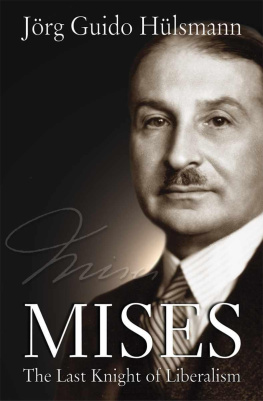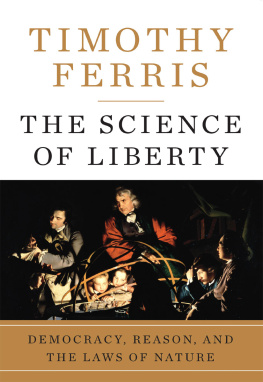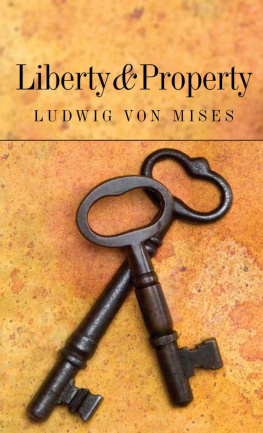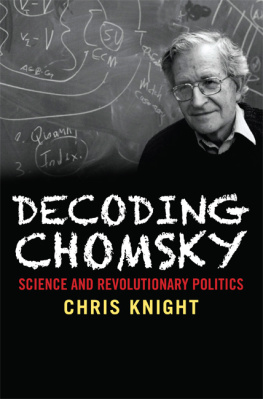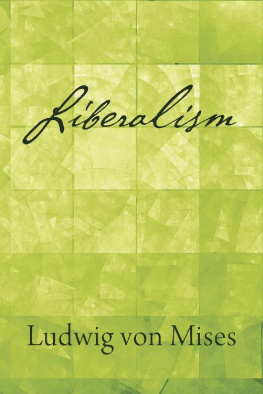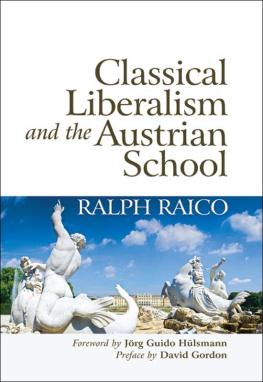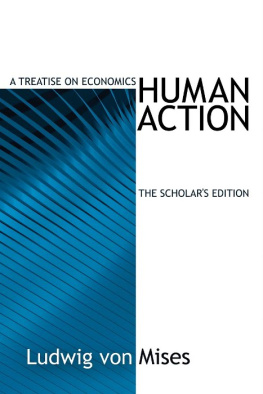
MISES

The Last Knight of Liberalism
JRG GUIDO HLSMANN

Photos:
Bettina Bien Greaves, cover,
Archival Repository of the Center for Advanced Research in Phenomenology, University of Memphis,
David Jarrett photographs,
George Koether photographs,
Harvard University Archives,
Hazlitt Photo Archive, Mises Institute,
Herbert Hoover Presidential Library, RWL #22,
Institut fr Sozialforschung,
John Chamberlain Papers, Syracuse University,
Macmillan Publishers, ,
Mises Archive at Grove City College,
Mises Institute Photo Archive,
Mont Plerin Society,
Moscow Archives, Mises,
sterreich Lexikon,
Rothbard Photo Archive, Mises Institute,
Rubbettino Publishers,
Ruprecht-Karls-Universitt Heidelberg online,
University of Vienna,
Warren J. Samuels Portrait Collection, Duke University,
Wikipedia,
All rights reserved. Written permission must be secured from the publisher to use or reproduce any part of this book, except for brief quotations in critical reviews or articles. For information write: Ludwig von Mises Institute, 518 West Magnolia Avenue, Auburn, Alabama 36832; mises.org
Copyright 2007 by the Ludwig von Mises Institute
ISBN: 978-1-933550-18-3
The Ludwig von Mises Institute dedicates this volume to all of its generous
donors and wishes to thank these Patrons, in particular:
The Lowndes Foundation, Douglas E. French and Deanna Forbush,
Hugh E. Ledbetter, Frederick L. Maier

Christopher P. Condon, R.E. Fox, Mr. and Mrs. Michael L. Keiser,
Richard J. Kossman, M.D., Mr. and Mrs. R. Nelson Nash,
Dr. and Mrs. William H. Peterson, Sheldon Rose,
Chris Rufer, Art Schumer

Lloyd Alaback, Wesley and Terri Alexander, Ross K. Anderson,
Anonymous, Robert G. Beard, Jr., JD, CPA, Elsie K. Beekley,
Mr. and Mrs. William M. Benton, Professor Walter Block,
John Hamilton Bolstad, Herbert Borbe, Mr. and Mrs. J. Robert Bost,
Philip G. Brumder, Aubrey T. Carruth, Dan H. Courtney,
Professor Jim Cox, Mr. and Mrs. Jeremy S. Davis,
Mr. and Mrs. Charles F. de Ganahl, Michael H. and William E. Denyer,
Dr. and Mrs. George G. Eddy, Dr. Larry J. Eshelman,
Clyde Evans, Robert S. Ferguson, Mr. and Mrs. Willard Fischer,
James W. Frevert, Henry Getz, Stewart B. Gillespy, Brian J. Gladish,
Charles C. Groff, Charles F. Hanes, Keith M. Harnish,
Mr. and Mrs. John A. Hayes, Jule R. Herbert, Jr., Dr. Frederic Herman,
Dr. James M. Herring, Adam L. Knott, David M. Kramer,
Sylvio O. LeComte, Arthur L. Loeb, James Mahannah,
Ronald Mandle, Mr. and Mrs. William W. Massey, Jr.,
Wesley G. McCain, Joseph Edward Paul Melville, A. Minis, Jr.,
Dr. Dorothy Donnelley Moller, Karlheinz Muhr,
The Orcas Bay Foundation, George A. Peterson,
Professor and Mrs. Stanley E. Porter, Mr. and Mrs. Wilfried A. Puscher,
T. James Reynolds, David L. Richards, Willard A. Richardson,
Thomas Ross, Mr. and Mrs. Joseph P. Schirrick, Conrad Schneiker,
Norman K. Singleton, Andrew Sirkis, Henri Etel Skinner,
Carlton M. Smith, David M. Smith,
Mr. and Mrs. Warren C. and Georgia M. Spatz,
Mr. and Mrs. Dennis A. Sperduto, William V. Stephens,
Richard and Alicia Stephenson, Byron L. Stoeser, Charles A. Strong,
James E. Tempesta, M.D., Kenneth S. Templeton,
Mr. and Mrs. Reginald Thatcher, top dog TM,
Chris and Carolyn Tormey, Polly J. Townsend,
Lawrence Van Someren, Sr., Guy M. Binx Walker,
Dr. Thomas L. Wenck, Brian J. Wilton, Malcolm F. Wittig,
Mr. and Mrs. Walter Woodul III,
Dr. Steven Lee Yamshon, Robert S. Young
Contents
Preface
IN THE SUMMER OF 1940, with Hitler's troops moving through France to encircle Switzerland, Ludwig von Mises sat beside his wife Margit on a bus filled with Jews fleeing Europe. To avoid capture, the bus driver took back roads through the French countryside, stopping to ask locals if the Germans had been spotted aheadreversing and finding alternative routes if they had been.
Mises was two months shy of his fifty-ninth birthday. He was on the invaders' list of wanted men. Two years earlier, they had ransacked his Vienna apartment, confiscating his records, and freezing his assets. Mises then hoped to be safe in Geneva. Now nowhere in Europe seemed safe. Not only was he a prominent intellectual of Jewish descent; he was widely known to be an archenemy of National Socialism and of every other form of socialism. Some called him the last knight of liberalism.
He had personally steered Austria away from Bolshevism, saved his country from the level of hyperinflation that destroyed interwar Germany, and convinced a generation of young socialist intellectuals to embrace the market. Now he was a political refugee headed for a foreign continent.
The couple arrived in the United States with barely any money and no prospects for income. Mises's former students and disciples had found prestigious positions in British and American universities (often with his help), but Mises himself was considered an anachronism. In an age of growing government and central planning, he was a defender of private property and an opponent of all government intervention in the economy. Perhaps worst of all, he was a proponent of verbal logic and realism in the beginning heyday of positivism and mathematical modeling. No university would have him. Margit began to train as a secretary.
Over the next decade, they would slowly rebuild and Mises would find new allies. He would also publish his most important book, Human Action. It would earn him a following whose admiration and devotion were beyond anything he had known in Europe.
When he died in October 1973, he had only a small circle of admirers and disciples, but this group became the nucleus of a movement that has grown exponentially. Today his writings inspire economists and libertarians throughout the world, and are avidly read by an increasing number of students in all the social sciences. There is an entire school of Misesian economists flourishing most notably in the United States, but also in Spain, France, the Czech Republic, Argentina, Romania, and Italy. This movement is testimony to the lasting power and impact of his ideas.
The purpose of the present book is to tell the story of how these ideas emerged in their time. It is the story of an amazing economist, of his life and deeds. It is the story of his personal impact on the Austrian School and the libertarian movement. It is above all the story of a man who transformed himself in an uncompromising pursuit of the truth, of a man who adopted his ideas step-by-step, often against his initial inclinations.
Once a student of the historical method in the social sciences, he would become the dean of the opposition Austrian School and humanistic social theory. He went from left-leaning young idealist in Vienna to grand old man of the American Right. Dismissive of the metallists early in his career, he became an unwavering spokesman for a 100 percent gold standard. His example inspired students and followers, many of whom would take his message and method farther than he himself would go.
Next page
